The Audubon Observer, October 2020
|
|
||||
LIGHTS OUT NORTHEAST FLORIDA
One of the biggest threats to migrating birds, especially to songbirds since they primarily migrate at night, is brightly lit windows and buildings. Bright lighting at night can cause birds to become disoriented and confused, often causing deadly collisions with buildings and windows. In addition, lights can throw birds way off their migration paths, resulting in exhaustion and vulnerability to predators. The American Bird Conservancy estimates that up to a billion birds are killed each year by collisions with glass windows. Audubon’s Lights Out Program is a nationwide effort to convince building managers and homeowners to simply turn off excess lighting at night during the months migrating birds are flying overhead, giving them a much safer passage during their migration journey. We are thrilled to announce that we are joining this effort in partnership with St. Johns County Audubon Society and the Jacksonville Zoo and Gardens with our new initiative, Lights Out Northeast Florida. This program aims to inform local area residents, business owners, and elected officials about the dangers that bright lights pose to migrating birds with a public information campaign kicking off right now during fall migration. Another component of the initiative is a data collection effort engaging volunteers to walk downtown areas during spring and fall migration and count birds potentially killed by window strikes. This component is still in the initial planning stages, so we’ll share more information about this in the future when plans are more concrete. So what can YOU do to help birds during migration season? In our area, fall migration is generally during the months of September through November, and spring migration is generally March through May, so taking these simple steps during those months can help more birds survive their hazardous journey:
Thank you for doing your part to help migrating birds! --Carol Bailey-White, President MANY VOICES FOR CONSERVATION AND THE ENVIRONMENT Continuing our series focused on the contributions of Black Americans, Latin Americans, Native Americans, and other historically under-recognized groups to conservation and environmental sciences, since October 12th is Indigenous Peoples Day, it is only right to focus this month on an indigenous steward of the environment.
She has written two excellent books which I highly recommend: Gathering Moss, which was awarded the John Burroughs Medal for outstanding nature writing. and Braiding Sweetgrass, which I am happy to report has been on the NY Times Best Seller List for nonfiction. Braiding Sweetgrass is an exquisite collections of essays about the natural world which shows how the objective approach of science can be enriched by the ancient knowledge of the indigenous people. I encourage everyone to read this book as she writes so beautifully about nature. It also illustrates the true reverence between Native Americans and the earth, which is a relationship we all need to practice if we are to survive. She is also the founder and director of the Center for Native Peoples and the Environment. The mission of the center is to create programs that draw on the wisdom of both indigenous and scientific knowledge in support of our shared goals of environmental sustainability. It is important to note that indigenous peoples are the stewards of 4% of the land area of the United States and represent approximately 700 distinct communities possessing detailed knowledge of the biota of their homelands. Collectively, Native American land holdings contain more wild lands than all of the National Parks and Nature Conservancy areas in North America! Unfortunately, the majority of scientific professionals and educators have little understanding of the value of Traditional Ecological Knowledge (TEK). Exposure to TEK has a legitimate role in the education of the next generation of biologists, natural resource managers, and environmental scientists. The center has a large outreach program focused on increasing educational opportunities for Native American students in environmental sciences, research collaborations, and partnerships with Native American communities to address local environmental problem. Thank you for your amazing work and gifts, Robin. --Jody Willis, Vice President & Outreach Director NATIVE PLANTS FOR BIRDS: WALTER'S VIBURNUM To help you create bird friendly habitat in your landscape, we are continuing our monthly series featuring a native plant that is beneficial to birds and pollinators. This month's plant is: Walter’s Viburnum (Viburnum obovatum)
It is an evergreen woody shrub which is available in many different forms – upright, spreading, weeping, or dwarf. It is extremely fast growing and can tolerate a wide range of growing conditions. You can plant it in your garden in full sun or part shade; however, if you want spring blooms, full sun is best. It has lovely creamy white flowers which attract the bees and butterflies in the spring. In the fall, it has small red berries which turn black as they mature and are a great food source for birds and small mammals. It is moderately drought resistant and tolerates hurricane winds. It makes an excellent accent plant in the landscape or you can grow a wonderful hedgerow or border screen, providing habitat for nesting birds. (Please note that it can send up suckers but pruning on a regular basis will keep that in check.) Its dark green leaves vary in size from small to medium and are glossy, leathery, and tightly compacted, enhancing the ability to be a great buffer and nesting site. In northeast Florida, it might also experience a brief, deciduous period in the winter during colder temperatures. For additional information on native plants for birds, check out Audubon's excellent Plants for Birds website: Audubon.org/plantsforbirds. For local sources of native plants, check with the Ixia Chapter of the Florida Native Plant Society. They often have native plants as well as cuttings available at their monthly meetings on the first Tuesday of each month. Check out their Events Calendar for all of their upcoming activities. --Jody Willis, Vice President and Outreach Director AUTUMN MEANS BACK TO SCHOOL - AND MIGRATING BIRDS!
Autumn is currently in full swing on the First Coast, with a dramatic fall migration upon the state of Florida that includes everything from shorebirds to songbirds. Even though many birds, including shorebirds like plovers and sandpipers, make their way to points further south, many stop along the way to feed and recharge here in Northeast Florida. Songbirds such as warblers, grosbeaks, and thrushes join the southern trek this month, while year-round residents like cardinals and doves don’t migrate, yet still find full feeders and fresh water helpful for their survival. Autumn is a great time to see many birds at the feeder, making their way to warmer areas while the temperatures in most of the country begin to drop. Luckily, the First Coast is the perfect place for birders of any age to enjoy migrating birds as well as year-round residents!
Here are a few links to help guide learning about fall migration, feeding needs, and Halloween birding fun:
Lesson Packs:
--Cristina Tuckness, Education Director UPCOMING ACTIVITIES As we announced previously, no group outings or indoor gatherings are planned for this fall due to the COVID-19 pandemic. But there are still plenty of fun and informative events on tap! Here's what's coming up for October:
You can also take advantage of a wide array of fabulous, FREE online programs available from Audubon, Audubon Florida, the American Bird Conservancy, and the Cornell Lab of Ornithology. And you can watch them on YOUR schedule, anytime you like! Below are some of our favorite recent programs:
These are just a few of the many free programs available online. They are posted on several different platforms, so check their websites (links above), look for them on YouTube, and follow them on Facebook to find more fascinating and informative online programs! --Carol Bailey-White, President Duval Audubon Society, Inc.
|
||||

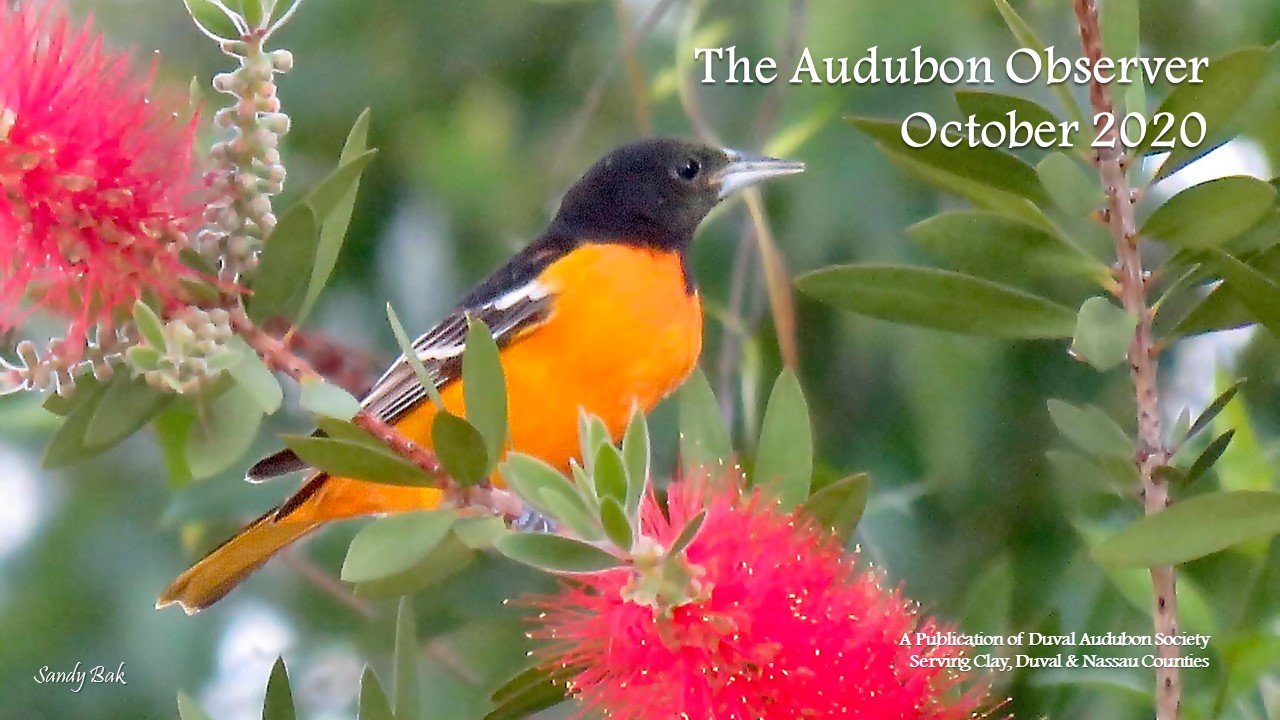
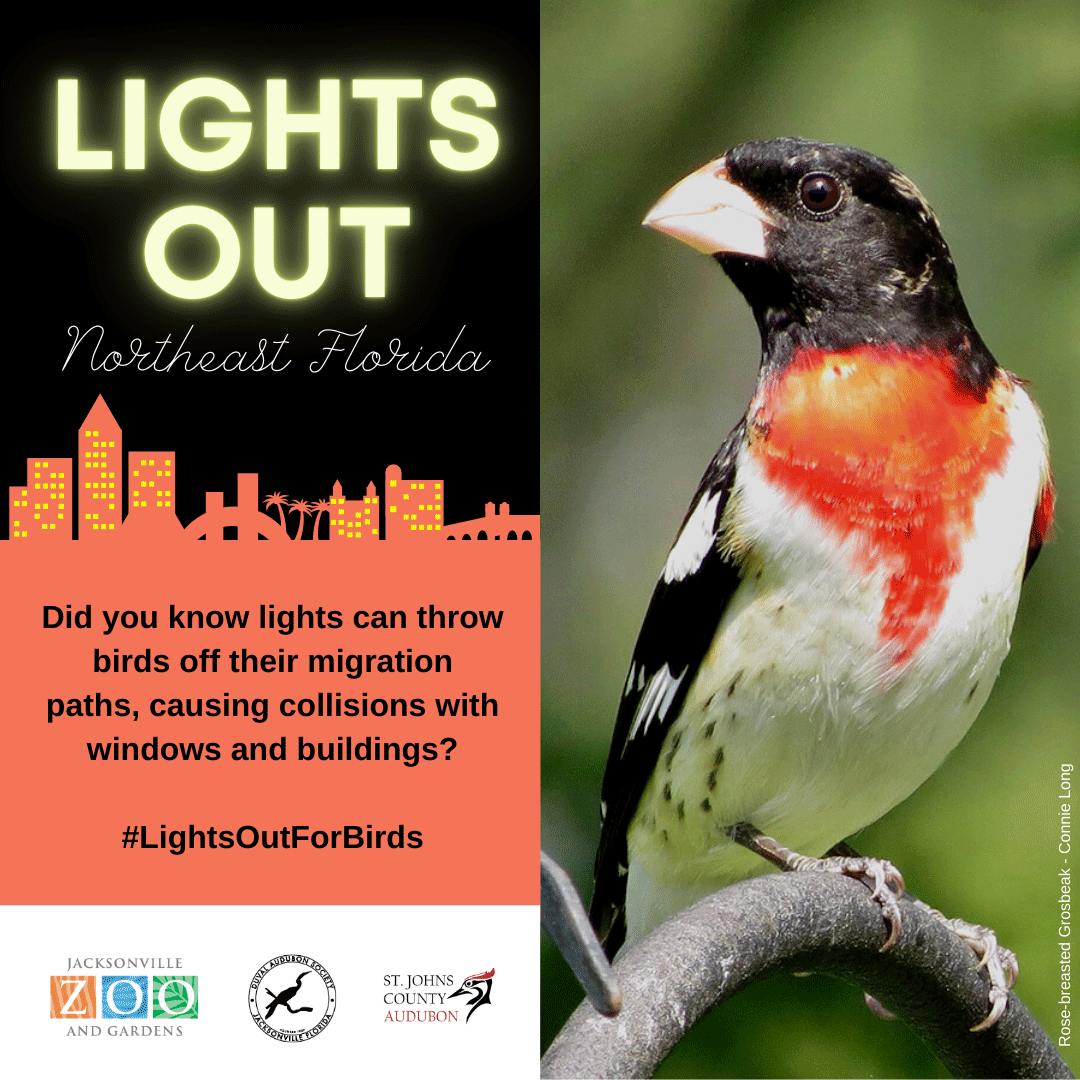 Every year, billions of birds fly thousands of miles as they migrate north to their breeding grounds in the spring and south to their wintering grounds in the fall. Migration is one of the most dangerous times in a bird’s life. They encounter many hazards as they travel: predators, bad weather, stopover habitat destruction due to development, food availability disruptions due to
Every year, billions of birds fly thousands of miles as they migrate north to their breeding grounds in the spring and south to their wintering grounds in the fall. Migration is one of the most dangerous times in a bird’s life. They encounter many hazards as they travel: predators, bad weather, stopover habitat destruction due to development, food availability disruptions due to 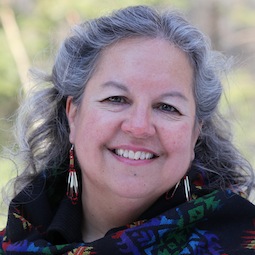 Robin Wall Kimmerer
Robin Wall Kimmerer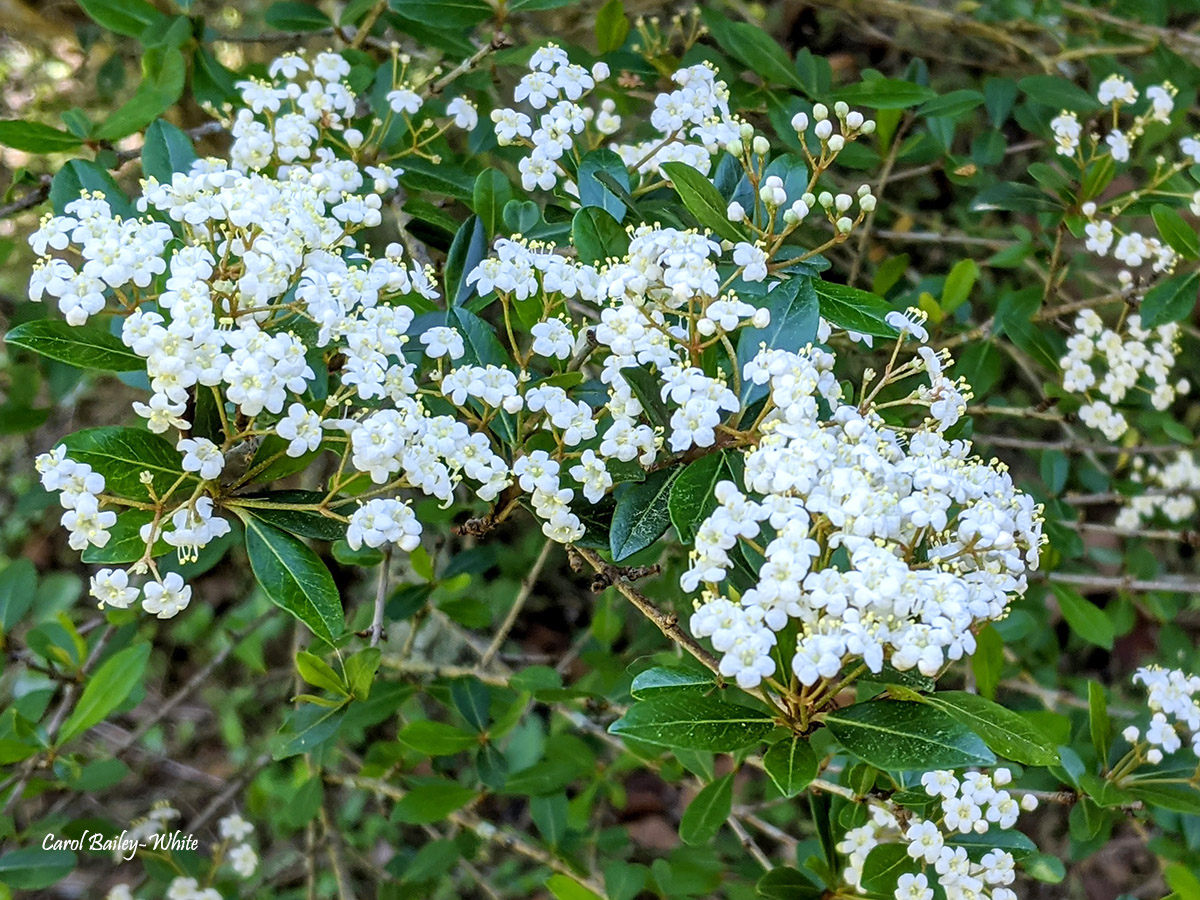 Walter’s Viburnum honors a colonial botanist named Thomas Walter (1740-1789). Thomas Walter was an English born planter who described this species in his catalog of South Carolina flowering plants,
Walter’s Viburnum honors a colonial botanist named Thomas Walter (1740-1789). Thomas Walter was an English born planter who described this species in his catalog of South Carolina flowering plants, 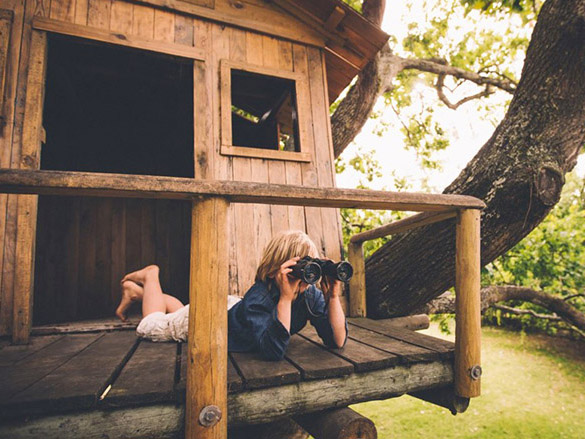 This year, back to school for students has been anything but the same ol’ migration back into classrooms, but seasonal lessons are still available even if they’re not from a school text or a formal classroom discussion. Keep your student engaged with outdoor fall activities such as backyard birding, trail hikes through local parks, and shore excursions to view the multitude of migrating birds making their way south before the cold weather hits.
This year, back to school for students has been anything but the same ol’ migration back into classrooms, but seasonal lessons are still available even if they’re not from a school text or a formal classroom discussion. Keep your student engaged with outdoor fall activities such as backyard birding, trail hikes through local parks, and shore excursions to view the multitude of migrating birds making their way south before the cold weather hits.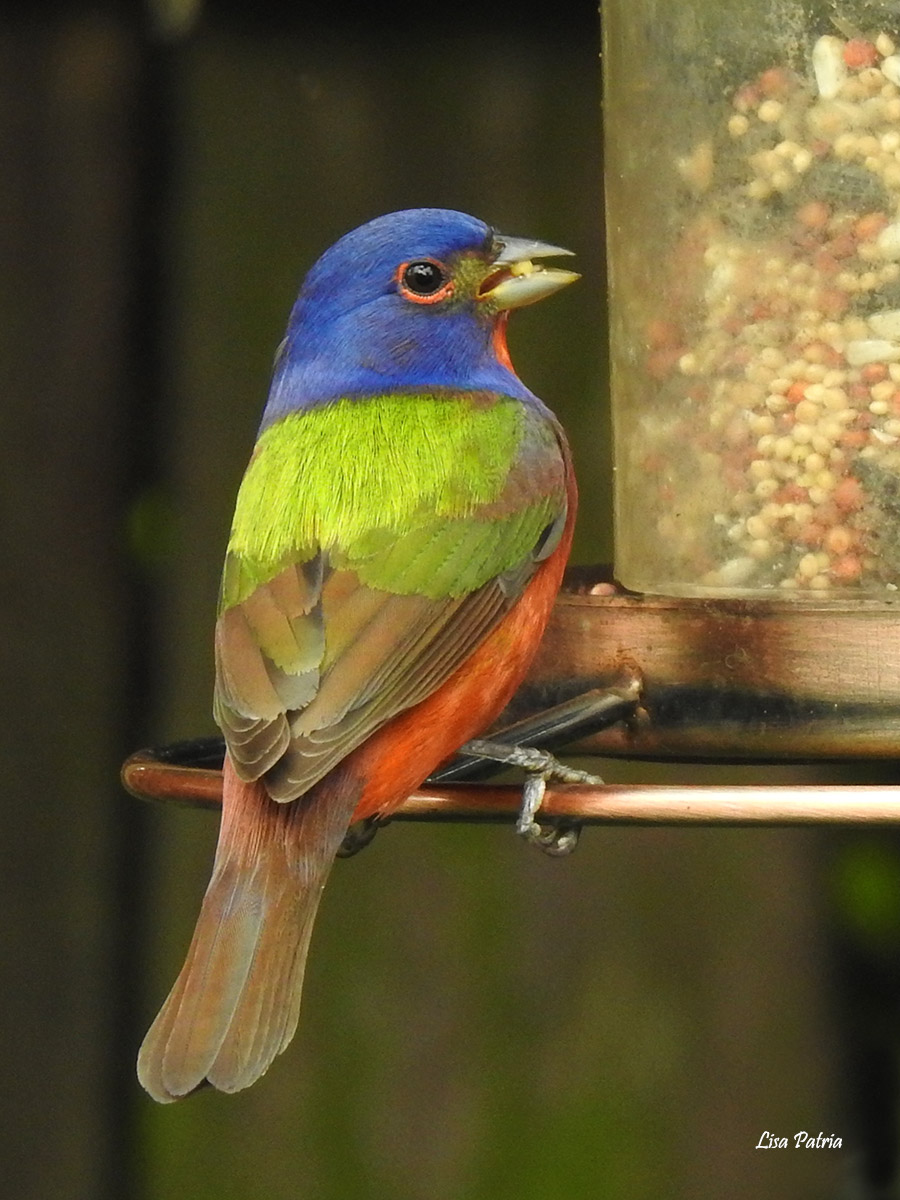 Helping children learn how to maintain a year-round birding backyard is beneficial to our entire ecosystem, and to the future of bird survival. Don’t forget to check in with your local educator and ask how you can help make classrooms, virtual or physical, a more bird-friendly place. You may be surprised to find that many schools welcome donations of feeders and bird baths for their outdoor areas.
Helping children learn how to maintain a year-round birding backyard is beneficial to our entire ecosystem, and to the future of bird survival. Don’t forget to check in with your local educator and ask how you can help make classrooms, virtual or physical, a more bird-friendly place. You may be surprised to find that many schools welcome donations of feeders and bird baths for their outdoor areas.